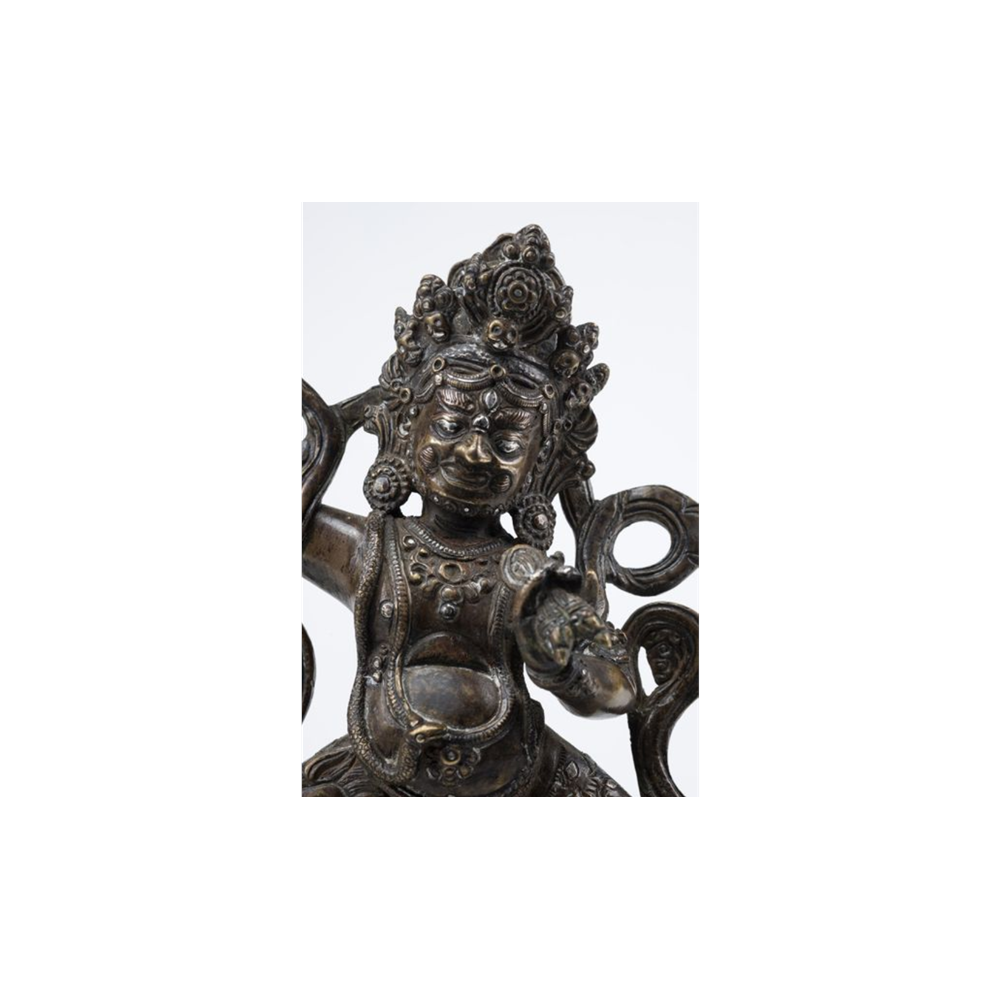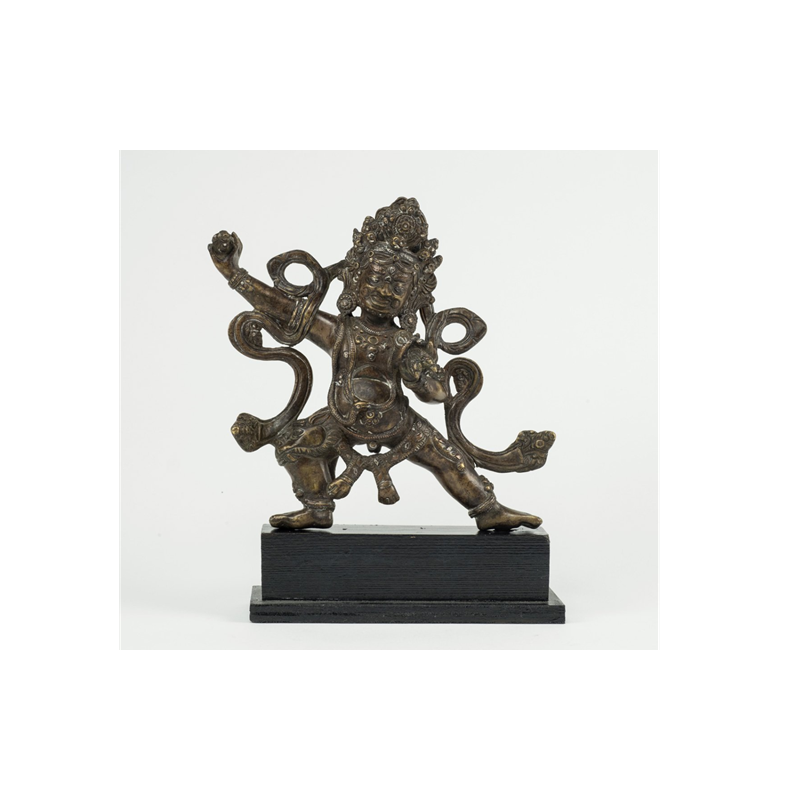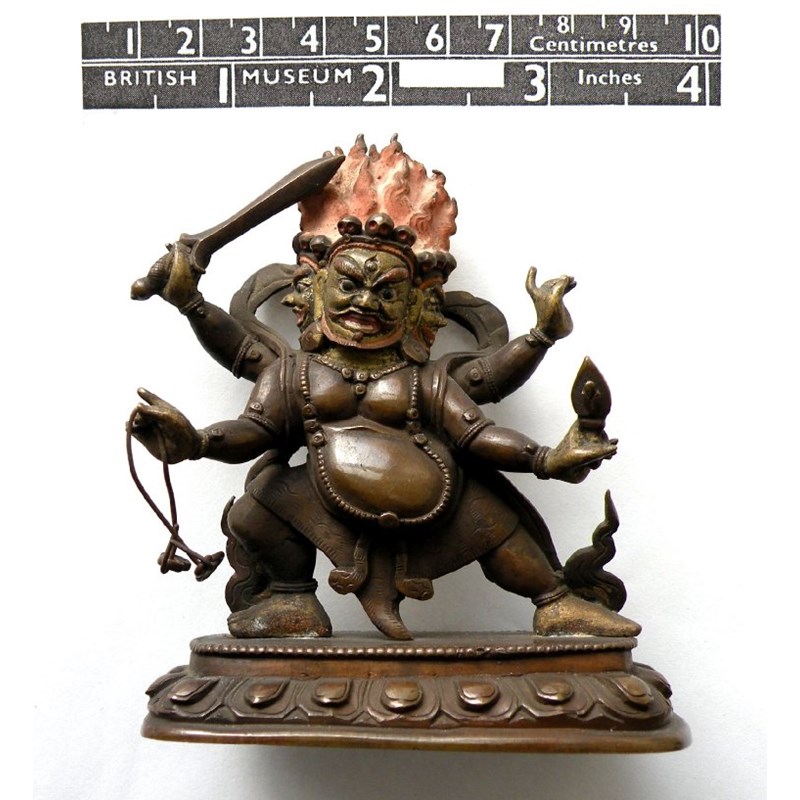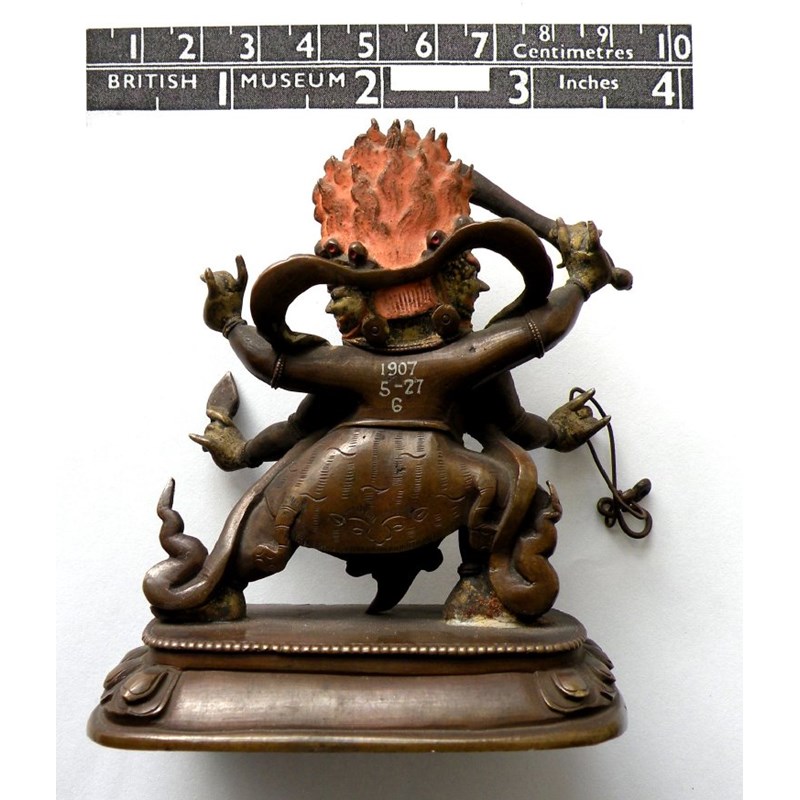RARE SILVER AND COPPER INLAID BRONZE OF MAHAKALA. SINO - TIBET, PROBABLY END OF 18TH CENTURY
Rare silver and copper inlaid bronze depicting a standing Mahakala. Classical example of the so called "Pala revival", widely favoured in the early Qing period and especially during Qianlong reign (1736 - 1796), this elegant figure shows a high quality goldsmith technique, as seen also in the smallest details. Sino - tibetan art, probably end of 18th / early 19th century or later. H. cm. 18
For a comparison with a closely related 18th century example in the British Museum, very similar in casting and patina, but much smaller and lacking the precious inlays characterising our item, see photos nr. 4 and 5 (Courtesy of British Museum, all rights reserved). This image can also be found at this link: http://www.britishmuseum.org/research/collection_online/collection_object_details/collection_image_gallery.aspx?assetId=106816001&objectId=225171&partId=1#more-views
For another similar example, labelled as 17th - 18th century, see also Himalayanart.org, item nr. 13487, sold at Sothebys New York, 22nd march 2018, in the following link: https://himalayanart.org/items/13487
The use of copper and silver inlays in this kind of ritual sculptures comes from a very antique tradition. First used in the Pala statuary, this technique has been imported in Tibet in the early phase of himalayan art, becoming widely adopted during the 14th and 15th century. The revival of Pala style during Qing era is well described in literature, but, despite of this, till today only a few is known about the images that show the technique of precious metal inlays after the Ming reign.






